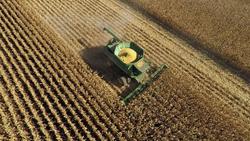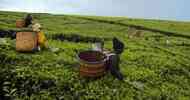
The Weekly Times | 11 March 2016
Super funds develop a taste for farming
NATALIE KOTSIOS
WHEN Agriculture Minister Barnaby Joyce rose to address the ABARES Outlook 2016 conference last week, he asked the question yet again: where are Australian superannuation funds when it comes to investing in agriculture?
Figures that showed just 0.3 per cent of super funds — of the $2 trillion in super funds — invested in the sector were “perplexing”, Mr Joyce said.
“I just find it peculiar that a nation that is the venue for so much flow of funds from overseas to invest in our agricultural assets is not the same venue for Australian super funds to invest in,” he said.
But super funds’ agricultural appetite is growing — and the real question, according to First State Super senior executive Damien Webb, is now not so much “why not invest?”, but “why now?”.
“Agriculture is starting to come into its own (in super) ... the super industry has grown up a lot and now it can consider doing investments,” he told the ABARES conference.
The problem has long been agriculture’s inherent volatility — it’s too much of a risk for super funds to make long-term investments. But financial consultant and Australian Grains Champion director John Corbett believed agriculture was “on the very beginnings of the evolution of investment models” that would attract capital to the sector.
Mr Corbett is a driving force behind the bid to commercialise WA grain handling co-op CBH Limited, a move First State Super was backing with $300 million in funding.
While Mr Corbett stressed the deal was ultimately in the hands of the growers, the experience of getting institutional capital over the line was insightful, showing part of the problem was a lack of understanding by investors.
“They pick-up the front page of The Australian and they’ll have a picture there of the drought at Longreach, and cattle standing in a field with not a blade of grass, and they equate that to all of Australian agriculture,” he said.
“It’s just trying to get people to understand that with modern farming practices, such as in the grain sector, that volatility is being managed.”
Should the deal come off, it won’t be the first agricultural investment for First State Super. Its involvement in a $150 million deal last year with almond grower Select Harvest has been touted as an example of how super funds can come on board.
In that arrangement, First State Super bought almost 4000 hectares of land and leased it back to Select Harvest for 20 years. It’s a way to provide “bespoke capital solutions”, Mr Webb said, for farmers to use funds for productive purposes.
“There’s always the front page test, of how will this look, how will this feel (to our investors),” he said.
“In the case of the almond farm, they were thrilled their money was going in to this.”
Macquarie Agricultural Funds Management, which has two wholesale agricultural funds (grain and oilseed assets in Australia and Brazil), prefers an owner-operator model.
Macquarie Group’s Elizabeth O’Leary, also speaking at ABARES, said agriculture’s volatility was still “very real and not cushioned, so as a result we see tenancy risk in core broadacre farming”. An owner-operator model allowed them management of that risk.
Ms O’Leary said agricultural investment by super funds had been hampered by a lack of “nimble product offerings” that reflected investors’ desires and agriculture’s needs. There needed to be “a marriage”, she said, “between small and big opportunities”.
“I hear a lot of frustration in the sector where owner-operators say, ‘I’ve got this great business plan and I only need a couple of million’,” she said.
“And it’s not criticising the business plan or the objective, but try putting yourself in the institution’s shoes — it’s very difficult to find ways to play in that space.”
Mr Corbett said he had banked farming families whose net worth was well in excess of $1 million today after one generation, “because they’re very good at what they do”.
“But how do you start to capture that and actually align that back to an investment model? That’s one of the key things as an industry sector we’re still grappling with.”
Ms O’Leary said the next 10 years could see funds more comfortable cycling capital in and out of agriculture and agricultural investments — “new language” for those who grew up on family farms and “the farm either stayed in the family, or it left the family”.
Still, it doesn’t mean the end of the family farm — quite the opposite.
Figures revealed by ABARES last week showed family farms still outperformed corporates, with 60 to 70 per cent of investment provided directly by the owners of family farms. The corporate model was unlikely to exceed 20 per cent in the future.
“But does it matter?” asked Ms O’Leary. “Does it matter if we’ve got successful farming businesses being developed, employing people, committing themselves to the community?
“I don’t see the two models as being mutually exclusive, I think the market is well and truly large enough for both.”













